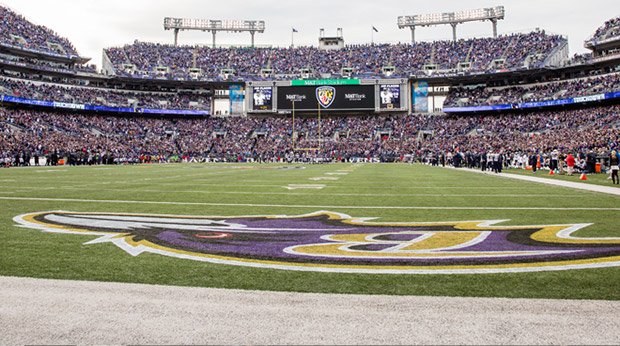Ryan Mink, Baltimore Ravens, December 4, 2015
EXCERPTS FROM THE ARTICLE:
“The players really wanted to play on grass and that was a key consideration. The coaches wanted to play on grass,” Cass said.
Baltimore had natural grass in the stadium when M&T Bank Stadium opened in 1998, but it didn’t work out well.
The field got chewed up during the season and they had trouble keeping it in good condition late in the season due to sunlight restrictions. Starting in early November, sunlight does not reach the Ravens sideline from about the numbers into the bench.
Thus, the Ravens changed to an artificial turf from Sportsexe Momentum Turf for the 2003 season, then replaced that with a newer Shaw Momentum 51 turf before the start of the 2010 season.
Cass said he has long felt that the Ravens’ artificial surfaces were the best in the league. The Ravens knew at the end of the season they were going to replace their current surface, and the original plan was to stick with it.
However, the Ravens did more research over the offseason on whether they could maintain a high quality grass field.
They found a different strain of grass, from a sod farm in North Carolina that are a mixture of Burmuda and some rye grass, that they believe will be more robust than what they previously used in the stadium. The Ravens also plan to use artificial light to keep grass growing where the field is shaded.
The team also plans to re-sod the entire field once during the season, and perhaps do parts of it a second time if needed. The team will have two backup fields growing in North Carolina and ready to go when needed.
“There have been a lot of technological advances with the grass from what I’m told,” Harbaugh said. “Our grounds people have done a great job of researching it, and they feel like they have the type of grass now that can thrive in there.”

